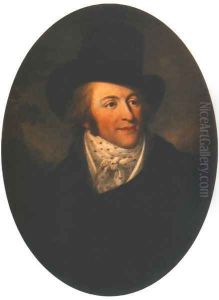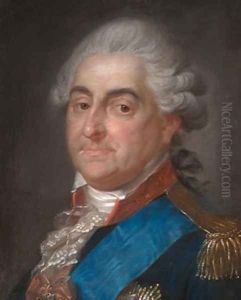Franz Jozef Pitschmann Paintings
Franz Jozef Pitschmann was an 18th-century artist, known primarily for his work as a painter. Born in 1725, Pitschmann's early life and training are not well-documented, which is not uncommon for many artists of his time. However, it is known that he was active during a period that was rich in artistic expression and innovation, the Baroque and early Neoclassical periods, which saw a transition from the grandeur and drama of Baroque art to the more restrained and formal Neoclassical style.
Pitschmann's body of work and the extent of his influence are less well-known than those of his contemporaries. He was likely involved in decorative projects and possibly religious commissions, as these were common forms of employment for artists of his time. His style would have reflected the tastes and artistic norms of the period, which often included a strong sense of movement, dramatic use of light and shadow, and an emphasis on realism combined with idealized beauty.
Despite the lack of specific details about his career, Pitschmann contributed to the rich tapestry of 18th-century European art. He passed away in 1796, leaving behind whatever works he had created to be appreciated by future generations. Due to the scarcity of information regarding Pitschmann's life and works, he remains a lesser-known figure in the history of art. His legacy, like many artists of the past whose lives are not well-recorded, may reside in the influence he had on his students or local art communities rather than in a large body of surviving works that can be attributed to him with certainty.

